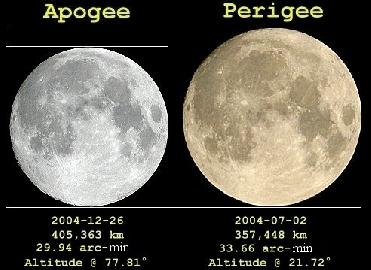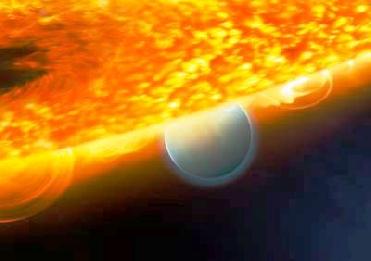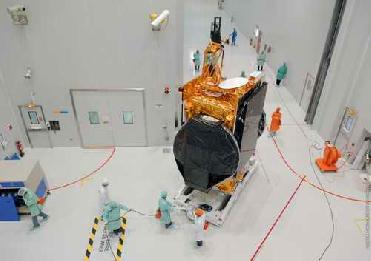
In 2004, Greek amateur astronomer Anthony Ayiomamitis photographed an apogee Moon and a perigee Moon, and set the images side by side to show the difference. NASA photo
WASHINGTON (BNS): Come Friday, and you will witness a cosmic flood lamp in the midnight sky. Take a walk outside around that time to view an absolutely brilliant landscape illuminated by a glowing full Moon � the brightest of the year.
According to US space agency NASA, some full moons are genuinely larger than others and this Friday's is a whopper.
Full Moons are always high during winter and, indeed, the solstice is right around the corner on December 21.
The Moon's orbit is an ellipse with one side 50,000 km closer to Earth than the other. In astronomical jargon, the two extremes are called "apogee" (far away) and "perigee" (nearby).
On Friday, December 12, the Moon becomes full four hours after reaching perigee, making it 14 percent bigger and 30 percent brighter than lesser full moons seen earlier in the year.
The perigee moon brings with it extra-high �perigean� tides. In most places, the lunar gravity at perigee pulls tidal water only a few centimeters (an inch or so) higher than usual.
"The best time to look is when the moon is near the horizon. That is when illusion mixes with reality to produce a truly stunning view," NASA said.
"The moon is 384,400 km away (on average). At that distance, the smallest things Hubble can distinguish are about 60 meters wide. The biggest pieces of left-behind Apollo equipment are only about 9 meters across and smaller than a single pixel in a Hubble image," NASA said.
 Previous Article
Previous Article Next Article
Next Article












The Indian Air Force, in its flight trials evaluation report submitted before the Defence Ministry l..
view articleAn insight into the Medium Multi-Role Combat Aircraft competition...
view articleSky enthusiasts can now spot the International Space Station (ISS) commanded by Indian-American astr..
view article